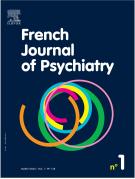High-dose buprenorphine: a last resort drug for treatment-resistant alcohol use disorder. Preliminary results of a compassionate observational pilot study. - 29/05/20
 , L. Pennel 1, 2, C. Salas Toquero 1, 3, M. Maillebuau 1, V. Martin-Gatignol 1
, L. Pennel 1, 2, C. Salas Toquero 1, 3, M. Maillebuau 1, V. Martin-Gatignol 1Résumé |
In France, 1-2 million drinkers suffer from alcohol use disorder (AUD). Fewer than 200,000 patients are treated for their AUD whereas 1.4 million patients are treated for alcohol-related consequences. Established pharmacological treatments have modest efficacy and no drugs are in development. AUD is underpinned by alterations of the endogenous opioid system which is currently modulated by naltrexone or nalmefene. Mu- and kappa-transmissions are respectively down- and upregulated. This imbalance may contribute to chronic stress and dysphoria in AUD patients and consequently to the persistence of consumption and relapse [1]. Long acting opioid agonists (LAOA) such as high-dose buprenorphine (HDB) may provide effective therapy. In opioid use disorder (OUD), individualized dose adaptations of LAOA allow patients to reduce or stop use of short acting opioids and associated substances such as alcohol [2]. The effect on alcohol consumption was also reported in rodents [3]. LAOA have psychotropic properties, as they can relieve psychiatric disorders (mood, suicidal ideation) in non-addicted subjects [4]. These symptoms are common in severe AUD and resistant to antidepressants when alcohol intake persists.
Because HDB appears more effective and safer than methadone in reducing alcohol consumption, we assessed HDB in an ambulatory pilot study, including 17 patients (male: 47 %) with treatment-resistant and life-threatening AUD and free of OUD. Wilcoxon tests were used to compare clinical characteristics between the inclusion and each time of the evaluation (month 1, 3, 6, 12) for each group of patients evaluated (17, 15, 10 and 5, respectively).
According to the preliminary results, a careful HDB titration led to significant decreases in daily consumption of alcohol from (mean (SD)) 98 (126) to 30 (42) and 14 (31) g/day, after 1 and 12 months of treatment respectively, without safety issues (transient dizziness, nausea), including HDB misuse. In patients with non-daily alcohol use but episodic heavy drinking days (HDD) (n=7), HDB decreased the number of HDD, from 7.3 (6.8) to 4 (7.3) and 0 at month 6 and 12, respectively.
HDB, a safe medication used for 23 years in France, could constitute a last resort therapeutic option usable in outpatient settings, allowing long-lasting reduction in alcohol consumption and related harmful consequences with low safety issues.
Le texte complet de cet article est disponible en PDF.Keywords : Treatment resistant alcohol use disorder, High-dose buprenorphine, Compassionate study, Last resort treatment
Vol 1 - N° S
P. S126-S127 - novembre 2018 Retour au numéroBienvenue sur EM-consulte, la référence des professionnels de santé.
L’accès au texte intégral de cet article nécessite un abonnement.
Déjà abonné à cette revue ?

